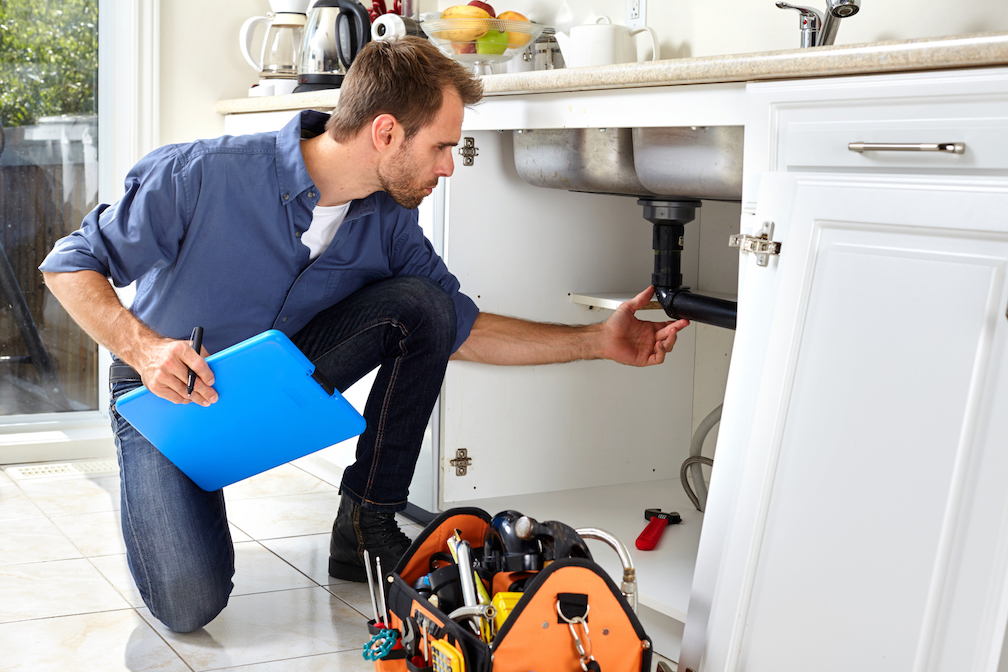Investigating and Resolving White Material in Your Plumbing System

Discovering bits of white material flowing through your home's pipes can be a disconcerting experience, prompting questions about the source and potential implications for your plumbing system.
In this guide, we will delve into the various causes of white material in pipes, explore in-depth solutions, and provide actionable steps to address the issue effectively.
Understanding the Culprits:
1. Identifying the Mysterious Material:
Before embarking on any solutions, it is crucial to understand the nature of the white material. These particles could range from harmless mineral deposits to more serious issues like deteriorating pipe components. Pinpointing the exact composition is the first step in addressing the problem accurately.
Common Causes and Solutions:
2. Mineral Deposits and Scale Buildup:
White, chalky bits in your water may signal the presence of mineral deposits or scale buildup, a common occurrence in areas with hard water. Hard water, abundant in minerals like calcium and magnesium, tends to deposit these minerals in pipes and fixtures over time.
- Solution: Installing a water softener is a proactive measure to reduce mineral content in your water supply. Regular descaling of faucets and showerheads can also mitigate the impact of mineral deposits. For a more comprehensive solution, consult a professional plumber to assess the situation and recommend appropriate measures.
3. Deteriorating Pipe Components:
In older homes, pipes crafted from materials like galvanised steel or polybutylene may deteriorate over the years, releasing white particles into the water. This deterioration can compromise water quality and the overall integrity of your plumbing system.
- Solution: A licensed plumber's expertise is crucial in this scenario. They can conduct a thorough inspection to identify deteriorating pipes and recommend replacements where necessary. This proactive approach ensures the long-term health of your plumbing system.
4. Water Heater Issues:
White particles may originate from the water heater if sediment builds up inside the tank. Over time, minerals in the water settle at the tank's bottom, forming debris that can find its way into your plumbing system.
- Solution: Regular maintenance is key. Draining and flushing your water heater periodically will remove sediment, enhancing its efficiency and preventing the release of white material into your plumbing system.
Comprehensive Solutions:
5. Professional Assessment:
If the source of the white material remains elusive or the issue persists despite your efforts, seeking professional help is paramount. A licensed plumber can conduct an extensive inspection, identify the root cause, and recommend the most effective and tailored solution for your specific situation.
- Professional Inspection: Plumbers have the expertise and tools to assess your plumbing system comprehensively. They can identify issues that might go unnoticed during DIY inspections and provide insights into preventive measures.
6. Preventive Measures:
Once the issue is resolved, implementing preventive measures becomes crucial to maintaining a healthy plumbing system. Regular maintenance, the use of water softeners, and periodic checks can collectively contribute to preventing the recurrence of white material in your pipes.
- Regular Maintenance: Establishing a routine for plumbing system checks and maintenance tasks ensures early detection of potential issues. This includes inspecting visible pipes for signs of deterioration and addressing them promptly.
- Water Softeners: If you reside in an area with hard water, investing in a water softener is a wise choice. These devices significantly reduce the mineral content in your water, preventing the buildup of deposits in your plumbing system.
- Periodic Checks: Regularly inspecting faucets, showerheads, and other fixtures for signs of mineral deposits allows for early intervention. Cleaning these fixtures periodically can help maintain water flow and quality.
Unraveling the Complexities:
7. Considering External Factors:
White material in pipes may also be influenced by external factors, such as changes in water source or alterations in municipal water treatment processes. These changes can introduce new elements into the water supply, leading to the appearance of unfamiliar particles in your plumbing.
- Water Source Changes: If your water source has changed recently, it might introduce different minerals or sediments into your plumbing system. Understanding these changes can help you adapt your maintenance routine accordingly.
- Municipal Water Treatment: Municipalities occasionally adjust water treatment processes, affecting the composition of the water delivered to your home. Staying informed about such changes can aid in troubleshooting unexpected issues.
Going Beyond Plumbing:
8. Appliance Inspection:
Sometimes, white material may originate from appliances connected to your plumbing system. Dishwashers, washing machines, and ice makers, for instance, can develop mineral buildup over time, impacting water quality.
- Appliance Maintenance: Regularly inspect and maintain appliances connected to your plumbing system. Follow manufacturer recommendations for cleaning and descaling to prevent the release of white material into your pipes.
9. Health Considerations:
While many cases of white material in pipes are related to mineral deposits, it's essential to rule out potential health-related concerns. If the particles appear unnatural or if there are other changes in water quality, consider having your water tested for contaminants.
- Water Testing: Engage a water testing service to analyse your water for any harmful substances. This ensures the safety of your household and allows for targeted solutions if contaminants are identified.
Implementing Long-Term Solutions:
10. Material-Specific Solutions:
Tailoring your approach based on the identified material is crucial for effective, long-term solutions. Different materials require distinct methods for removal and prevention.
- Chemical Treatments: In cases where mineral deposits are the primary culprit, chemical treatments designed to dissolve or neutralise these deposits can be employed. However, caution is advised, and professional guidance is recommended.
- Pipe Replacement: If deteriorating pipes are causing the issue, consider replacing them with more durable materials like copper or PEX. This investment can provide long-term benefits and enhance the overall reliability of your plumbing system.
11. Educating Household Members:
Educating everyone in your household about the importance of proper usage and maintenance can contribute significantly to the health of your plumbing system.
- Water Usage Habits: Encourage water conservation practices and discourage activities that might introduce foreign materials into the plumbing system. Simple habits, such as using drain screens and avoiding flushing inappropriate items, can make a substantial difference.
12. Environmental Impact:
Consider the environmental impact of your plumbing choices. Opting for eco-friendly appliances, fixtures, and water conservation practices not only benefits the planet but also contributes to the longevity of your plumbing system.
Advanced Techniques:
13. Hydro Jetting:
For stubborn blockages or sediment buildup in pipes, hydrojetting is an advanced technique that uses high-pressure water to clear debris. Professional plumbers can perform this service, restoring the flow and integrity of your plumbing system.
14. In-Depth Water Quality Analysis:
For persistent issues, investing in a comprehensive water quality analysis can provide detailed insights into the composition of your water. This information allows for targeted solutions tailored to your specific water conditions.
The Final Word:
Addressing bits of white material in your plumbing system requires a multi-faceted approach that combines investigative skills, preventive measures, and professional expertise. By understanding the causes and implementing appropriate solutions, you not only safeguard the immediate health of your plumbing system but also contribute to its long-term resilience.
Remember, plumbing is a dynamic system influenced by various factors, and ongoing vigilance is key to maintaining its optimal performance. Regular checks, proactive maintenance, and a commitment to environmental responsibility collectively ensure that your plumbing system continues to serve your household reliably. If in doubt or if issues persist, don't hesitate to seek the assistance of a qualified plumber who can provide tailored solutions based on their expertise and experience.

